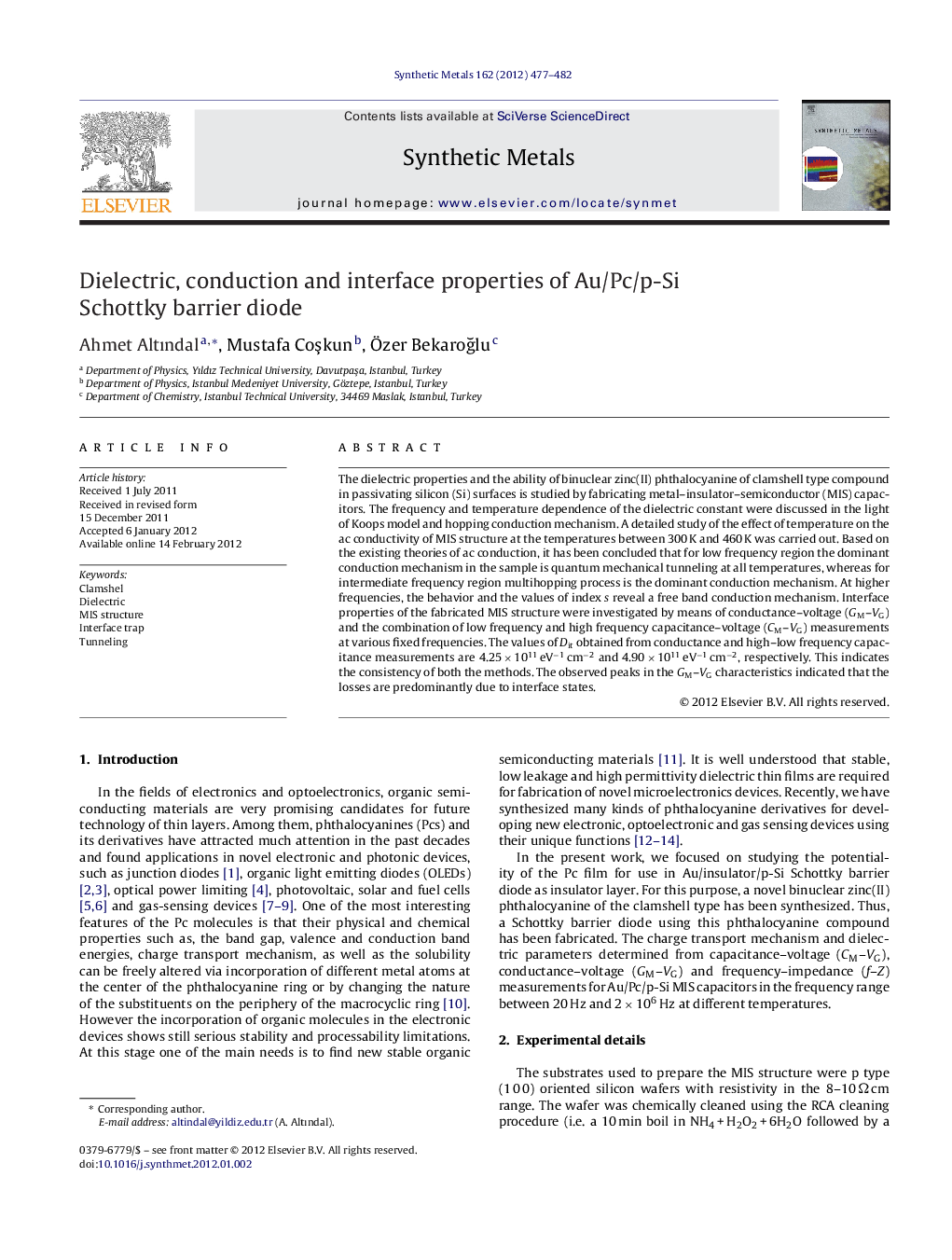| Article ID | Journal | Published Year | Pages | File Type |
|---|---|---|---|---|
| 1442098 | Synthetic Metals | 2012 | 6 Pages |
The dielectric properties and the ability of binuclear zinc(II) phthalocyanine of clamshell type compound in passivating silicon (Si) surfaces is studied by fabricating metal–insulator–semiconductor (MIS) capacitors. The frequency and temperature dependence of the dielectric constant were discussed in the light of Koops model and hopping conduction mechanism. A detailed study of the effect of temperature on the ac conductivity of MIS structure at the temperatures between 300 K and 460 K was carried out. Based on the existing theories of ac conduction, it has been concluded that for low frequency region the dominant conduction mechanism in the sample is quantum mechanical tunneling at all temperatures, whereas for intermediate frequency region multihopping process is the dominant conduction mechanism. At higher frequencies, the behavior and the values of index s reveal a free band conduction mechanism. Interface properties of the fabricated MIS structure were investigated by means of conductance–voltage (GM–VG) and the combination of low frequency and high frequency capacitance–voltage (CM–VG) measurements at various fixed frequencies. The values of Dit obtained from conductance and high–low frequency capacitance measurements are 4.25 × 1011 eV−1 cm−2 and 4.90 × 1011 eV−1 cm−2, respectively. This indicates the consistency of both the methods. The observed peaks in the GM–VG characteristics indicated that the losses are predominantly due to interface states.
► Novel clamshell type phthalocyanine thin film for MIS structure as insulator layer. ► Maxwell–Wagner type interfacial polarization. ► Quantum mechanical tunneling, multihopping and free band conduction are the dominant mechanism for ac conduction. ► The obtained density of interface states of the Au/Pc/p-Si/Al capacitor is comparable to some reported values. ► Our results predict that thin film of the investigated phthalocyanine compound is a good candidate for an alternative material to replace the SiO2 films as gate dielectric in MIS capacitors.
